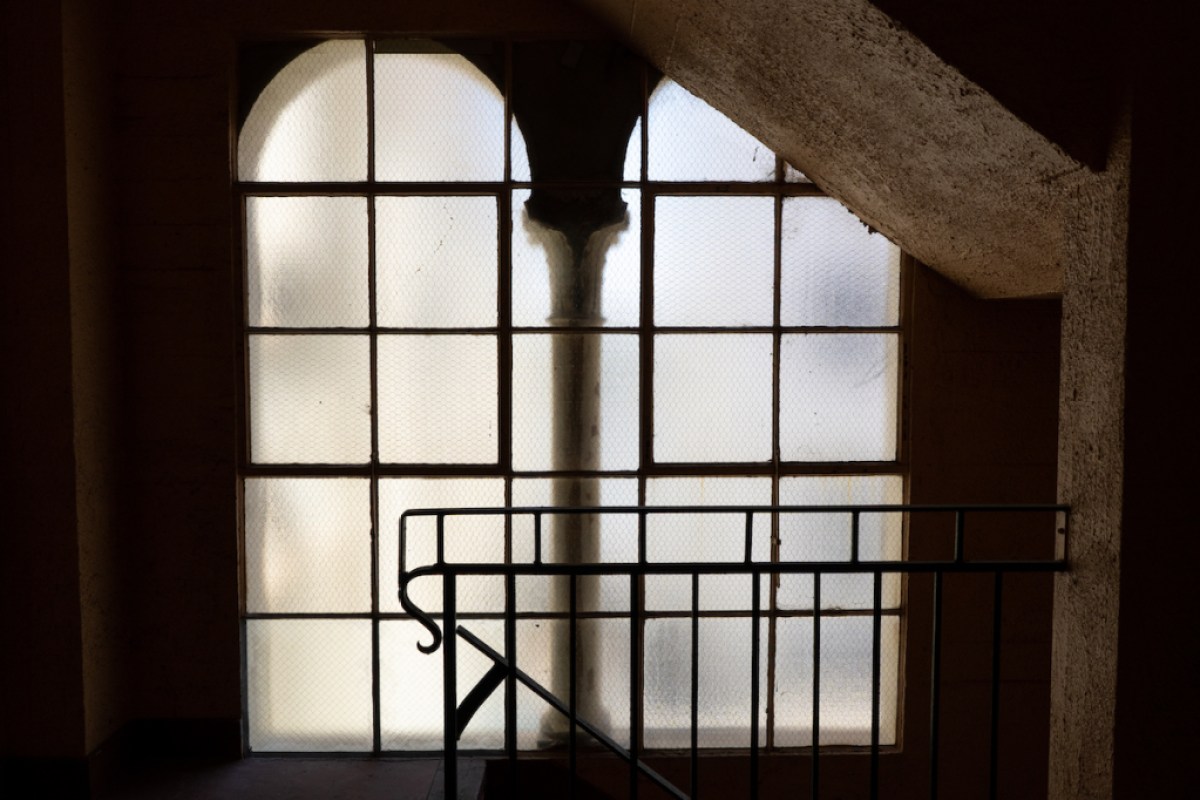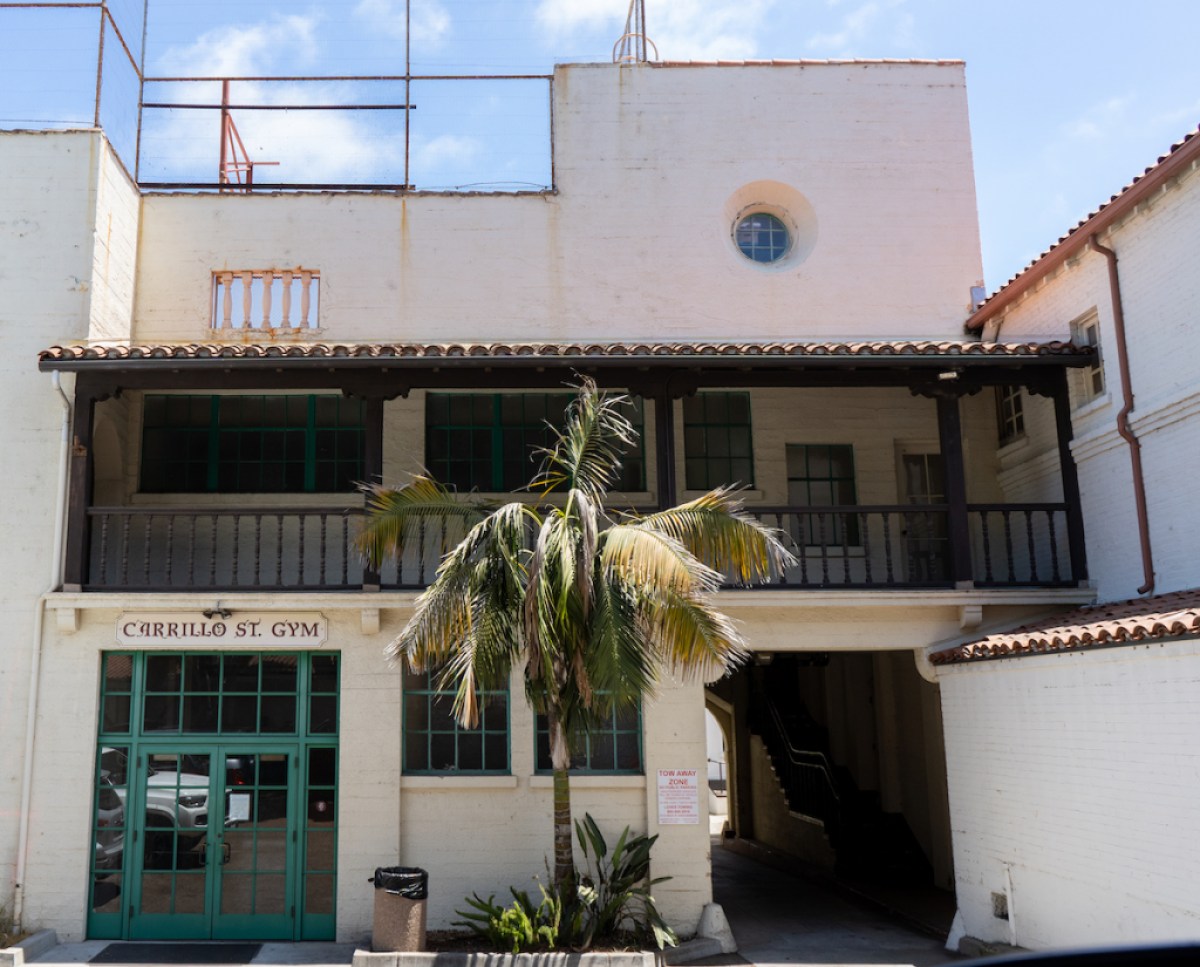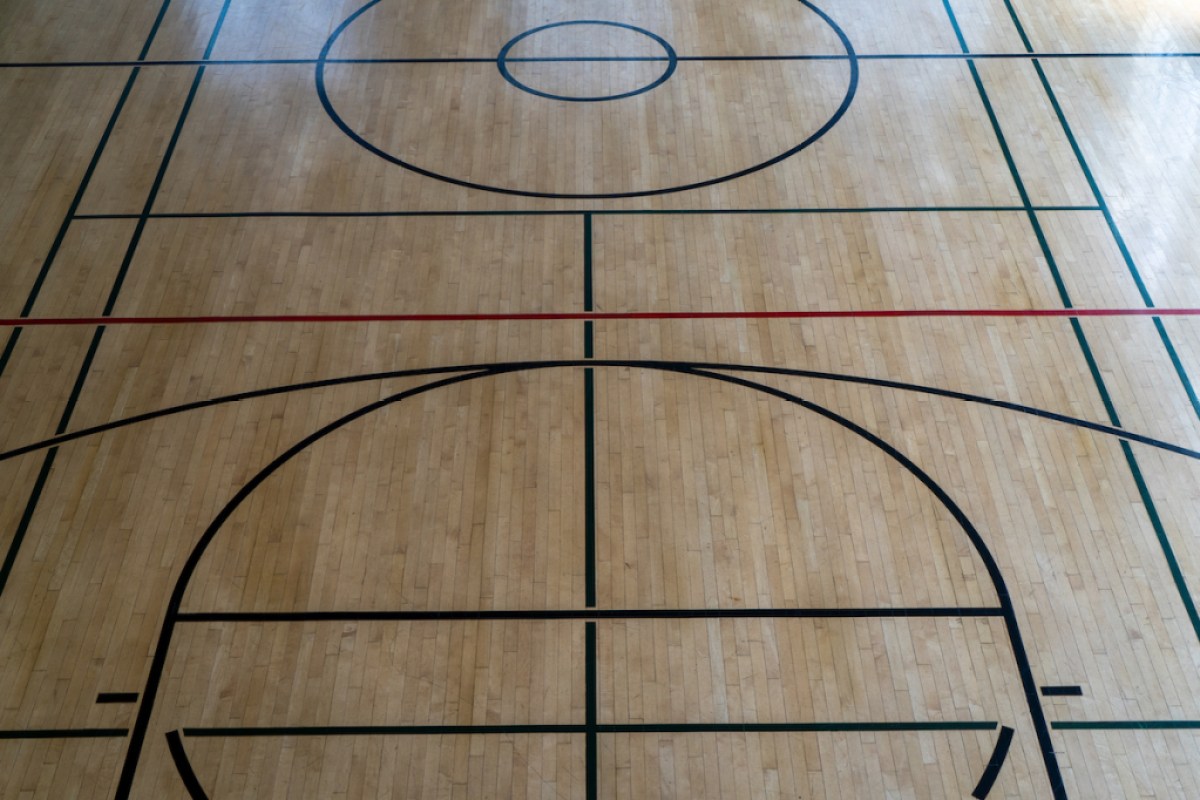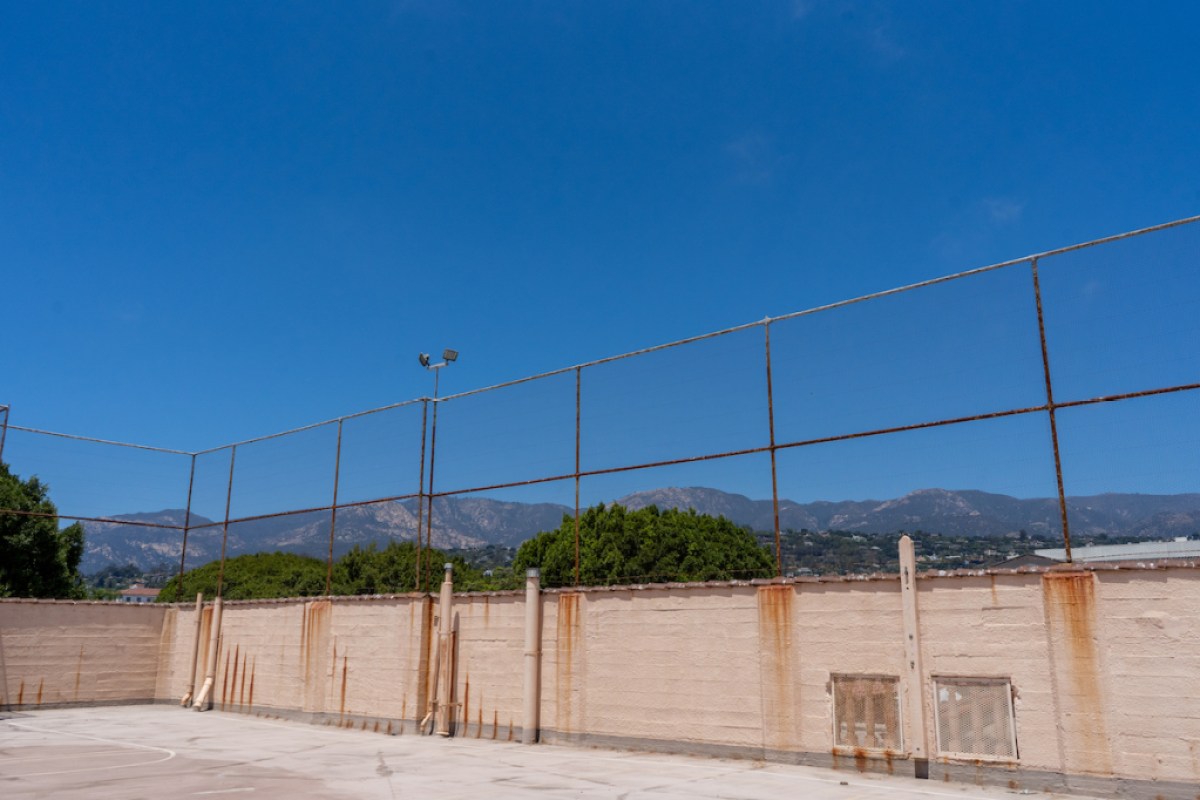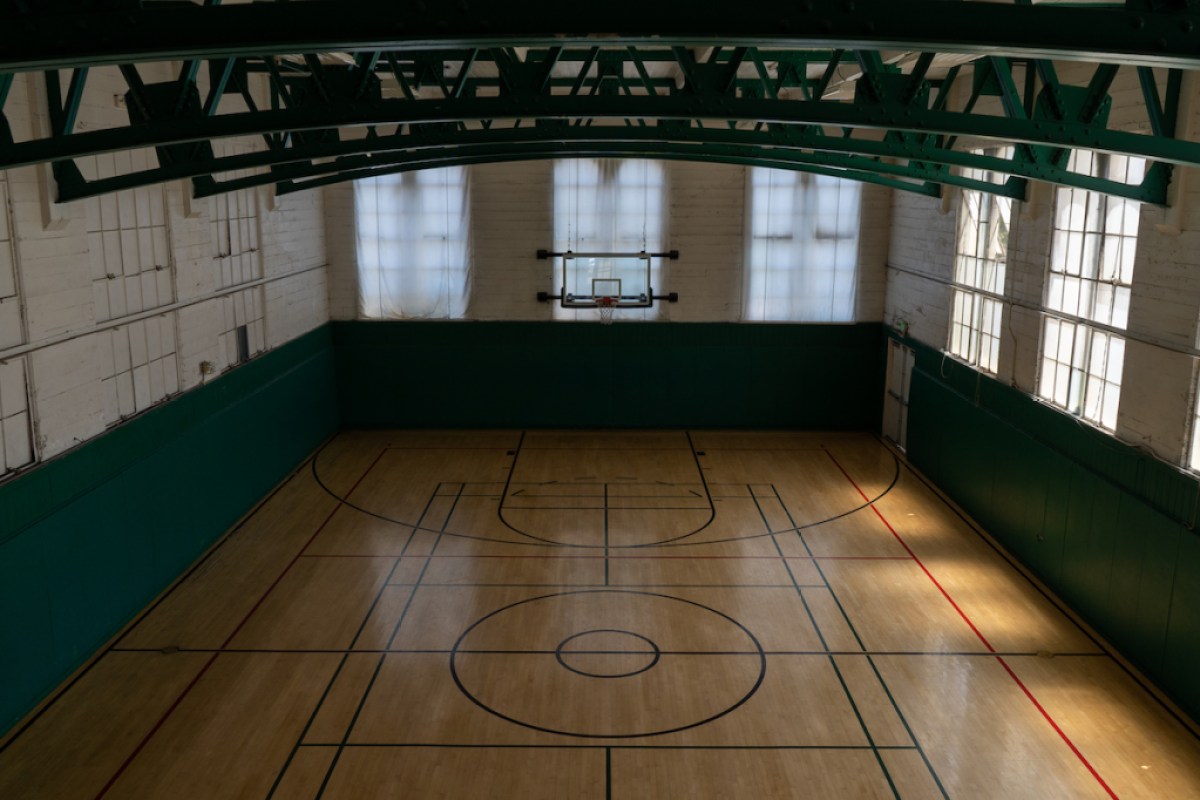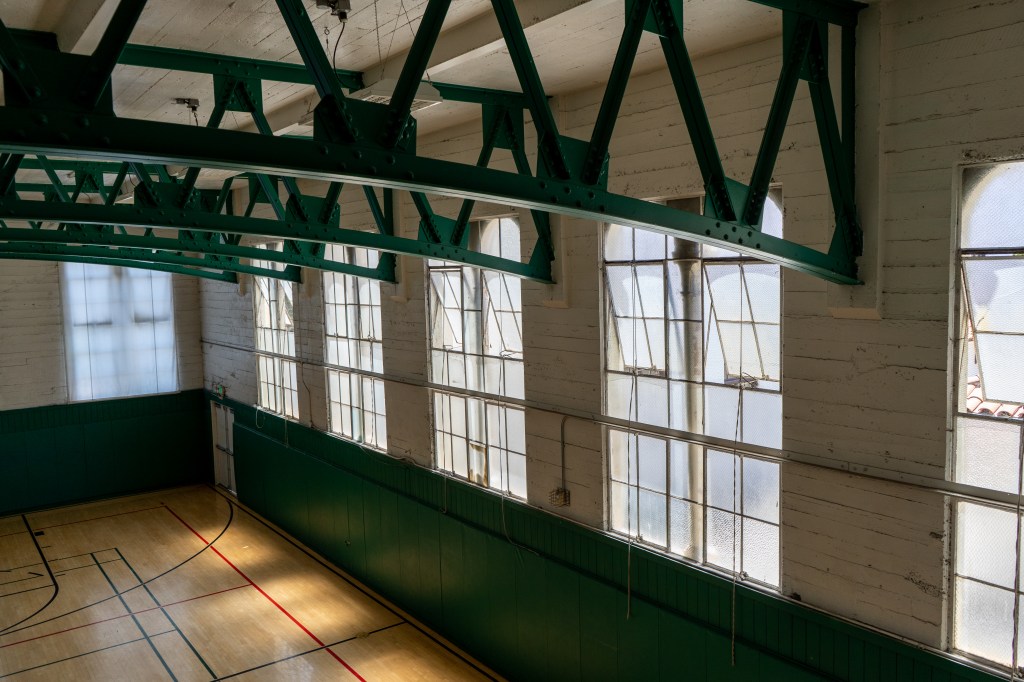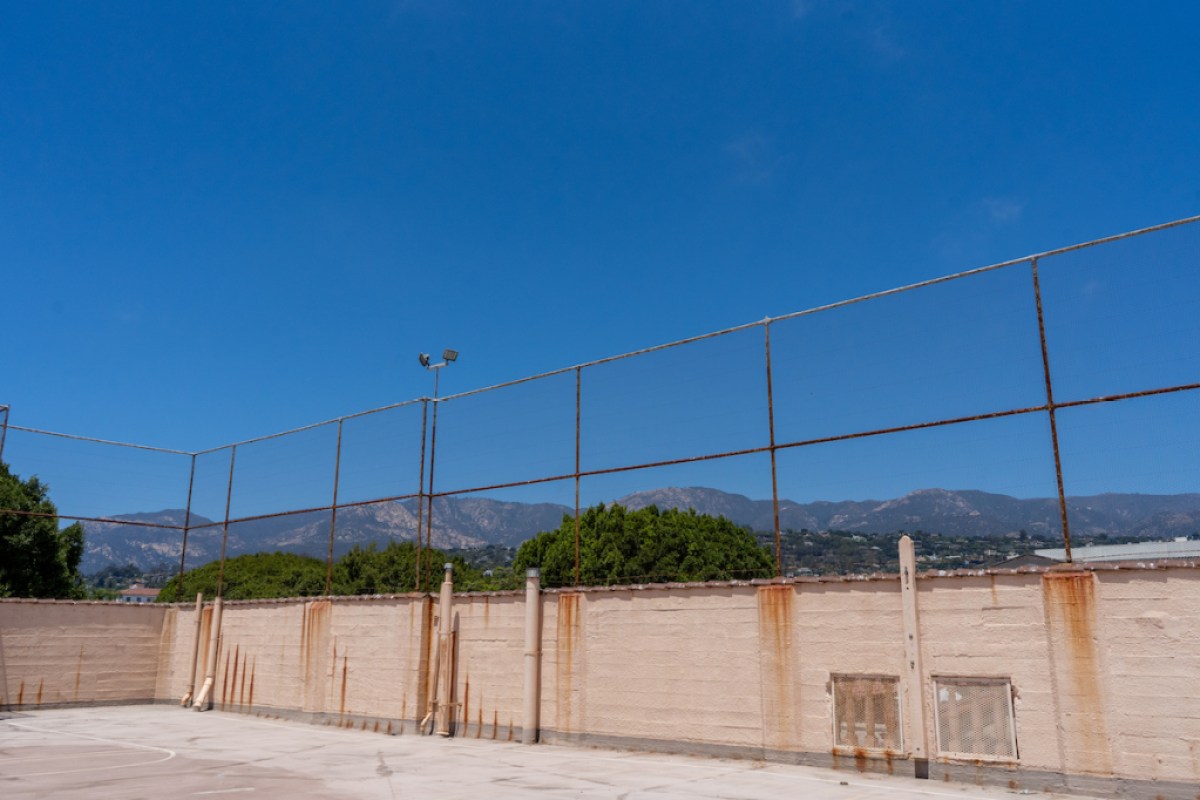Hidden in plain sight near one of downtown Santa Barbara’s busiest intersections, the Carrillo Street Gym has a deep history, dating back to the 1925 earthquake that devastated the center of the city and caused an estimated $8 million (more than $120 million today) in damages. The gym has lived a long life, with generations of locals using the facilities for exercise, fun, or to attend one of the many dances held for the city’s youth.
But after decades of deferred maintenance and plain old aging, the building has sustained some damage. Reminiscent of big-city ball courts in New York, Chicago, or Philadelphia, the unique rooftop basketball court once offered a one-of-a-kind playing experience, where a pickup game could be run with a panoramic view of the Santa Ynez Mountains. In recent years, the roof’s cement playing surface has become cracked and uneven; the eight-foot concrete wall and 12-foot chain-link fence are now rusted; and the backboards and hoops have been removed, leaving only a steel frame behind.
Now, with more than $6 million recently put aside by the city for a multiyear renovation, the Carrillo St. Gym is finally getting the makeover it deserves.
Jason Bryan, senior recreation supervisor with the city, has been overseeing the gym since the 1990s. Despite the gym showing its age in some places, the building itself has good bones, he says, and he has long been pushing the city for a large-scale renovation to restore it to its former glory.
“I’ve been bugging them for about 20 years,” Bryan jokes.
It’s easy to understand Bryan’s enthusiasm for the building, even without knowing its roots. The gym sits back from Carrillo Street, modestly concealing what lies beyond its aluminum-framed turquoise double doors. Once inside and through the small lobby, the indoor court welcomes visitors with its towering arched windows and steel beam supports — also painted in the gym’s trademark blue-green color, which Bryan says was chosen “because it looks good.”
Sign up for Indy Today to receive fresh news from Independent.com, in your inbox, every morning.
The original hardwood floor is surrounded by eight-foot-tall foam padding, also green, which is less than a foot away from the court’s boundary lines, forcing games to be a little different with a unique “out of bounds” obstacle.
But it’s the gym’s historical context that makes it really worth saving. It started as a smaller addition to the adjacent Carrillo Recreation Center around 1913, which was spearheaded by the center’s first director, Margaret Baylor. Baylor was a pioneer for her time and pushed for a community center where teens and single women could congregate for games, exercise, or events. She would serve as the center’s director until her death in 1924.
When both buildings were damaged in the 1925 earthquake, along with much of the downtown area, the city contracted California’s first licensed woman architect, Julia Morgan, to design its replacement, along with a women’s hotel on the south side of the rec center.
Morgan was a force in early-20th-century California architecture. Also the first woman ever to study at the prestigious l’École nationale supérieure des Beaux-Arts in Paris, she was fresh off completing her most well-known work — publishing tycoon William Randolph Hearst’s sprawling estate, Hearst Castle — when she was hired to design the Carrillo St. Gym.
The gym also had a feature that was not prevalent at the time: mixed-use housing. The breezeway stairwell up to the second floor mezzanine — a great place to watch basketball games, and also connected to a weight room and locker room — leads to two studio apartments, which are now used as storage spaces.
The small studios feature Morgan’s trademark “porthole windows,” which can be found in most of her designs, including the women’s hotel and Hearst Castle, with a view right onto Carrillo Street. Another window on the third-floor studio apartment offers an up-close view of the rooftop court.
Always ahead of her time, Morgan championed the Spanish Colonial Revival style that would come to define Santa Barbara’s architectural aesthetic, using the red-tiled roofs and white-plastered walls as an homage to the city’s first historical structures. The gym and the hotel, now known as the Margaret Baylor Inn, were also some of the first to attempt to be “earthquake-proof,” with Morgan utilizing steel-reinforced concrete that she found had “superior seismic performance” in her earlier works in San Francisco.
“For the time, it was the absolute best you could have for an earthquake,” said Justin Van Mullem, project supervisor with Santa Barbara Parks & Recreation. Van Mullem is leading the charge with the renovations, which, he says, have “been on the books a really long time,” but are finally approved and locked into the city’s budget starting next year.
According to the 2022-23 Adopted Budget, $660,000 is set aside this year for “minor renewals,” and another $1.8 million is earmarked for a larger renovation after that. For 2024-25, the city has a total of $3.8 million budgeted toward the project. It’s still early in the process, but both Bryan and Van Mullem look forward to tackling the renovation and opening the gym’s rooftop to the public once again.
With the money set aside, it’s now up to the city to finalize a contract for construction, which Van Mullem says may be completed in time for work to begin this fall. Early modifications will attack the areas with the most water damage and replace some of the column craftwork that has fallen apart over the years. Eventually, the rooftop’s floor will be replaced with a waterproof, multipurpose surface that will prevent water from leaking through into the indoor court.
The gym’s popularity has also faded as it has aged. In 1930, the city reported that more than 9,000 individuals used the gym, and the center’s information desk received more than 11,000 inquiries. The gym was home to many junior high and high school dances, with some locals even meeting their future spouses on the dance floor. In 1946, when the buildings were in danger of foreclosure, community youth and civic groups raised enough money to eliminate the debt and fully pay off the rec center and gymnasium. The hotel next door was lost to foreclosure.
In 1979, the gym was placed on the State Inventory of Historical Resources, and in 1984, it was designated as a city structure of merit. In 1993, both the gym and the rec center were officially designated as city landmarks. And while the Recreation Center and its ballroom have been refurbished and receive a strong schedule of rentals, the gym has fallen out of favor.
A strong contingent of basketball players rent the gym for pickup games, leagues, and camps, and a dedicated group of table-tennis enthusiasts meet for open games on every Monday, Wednesday, and Friday from 9 a.m. to noon. But other than those times, the gym does not have a staff to operate on a full-time basis.
With a face-lift on the horizon, Bryan believes that these renovations could renew interest for rentals, especially to those wanting to take advantage of the building’s unique rooftop court. It will also be a chance for the city to support the restoration of one of the most storied structures in the area.
Support the Santa Barbara Independent through a long-term or a single contribution.


